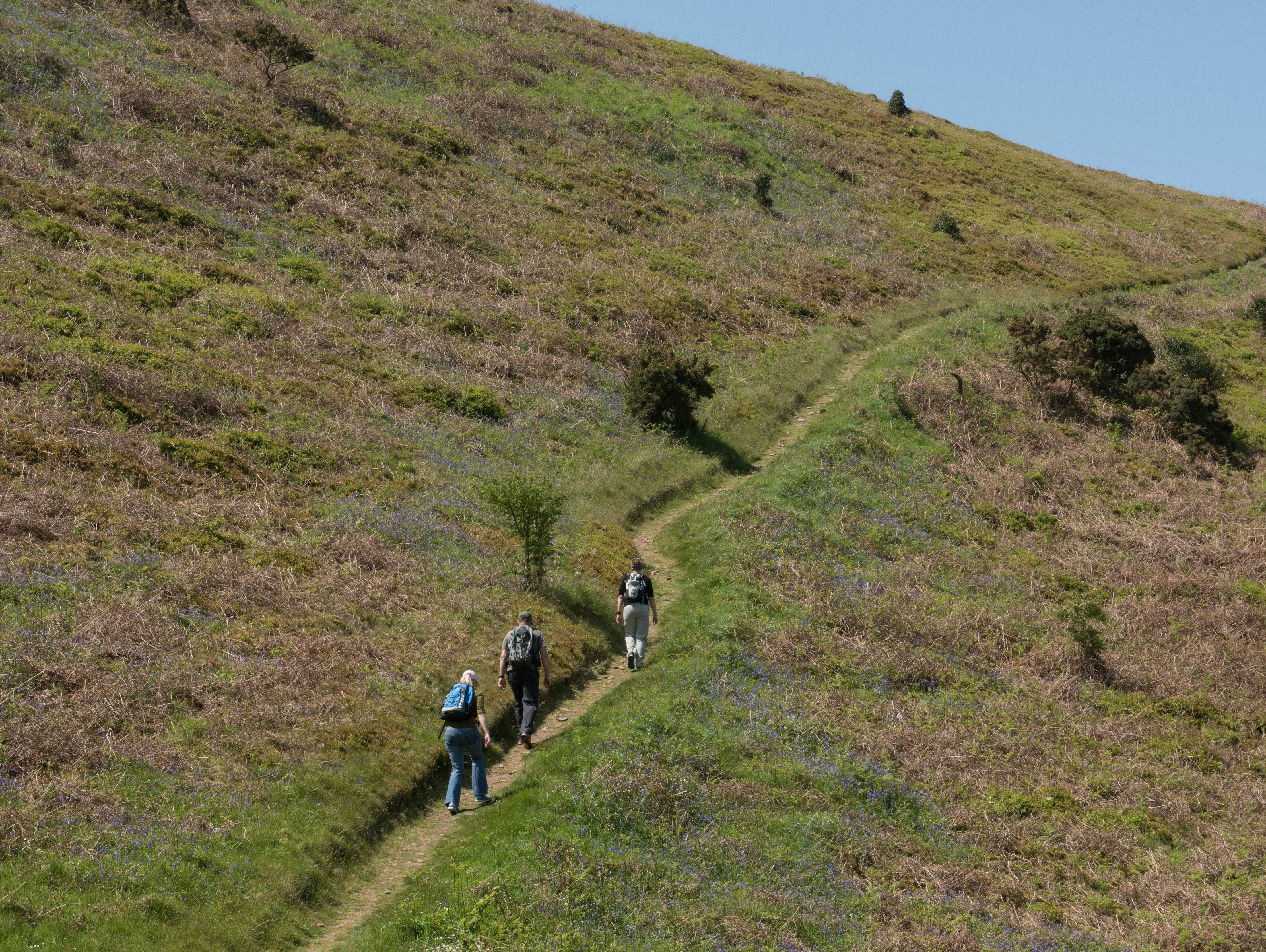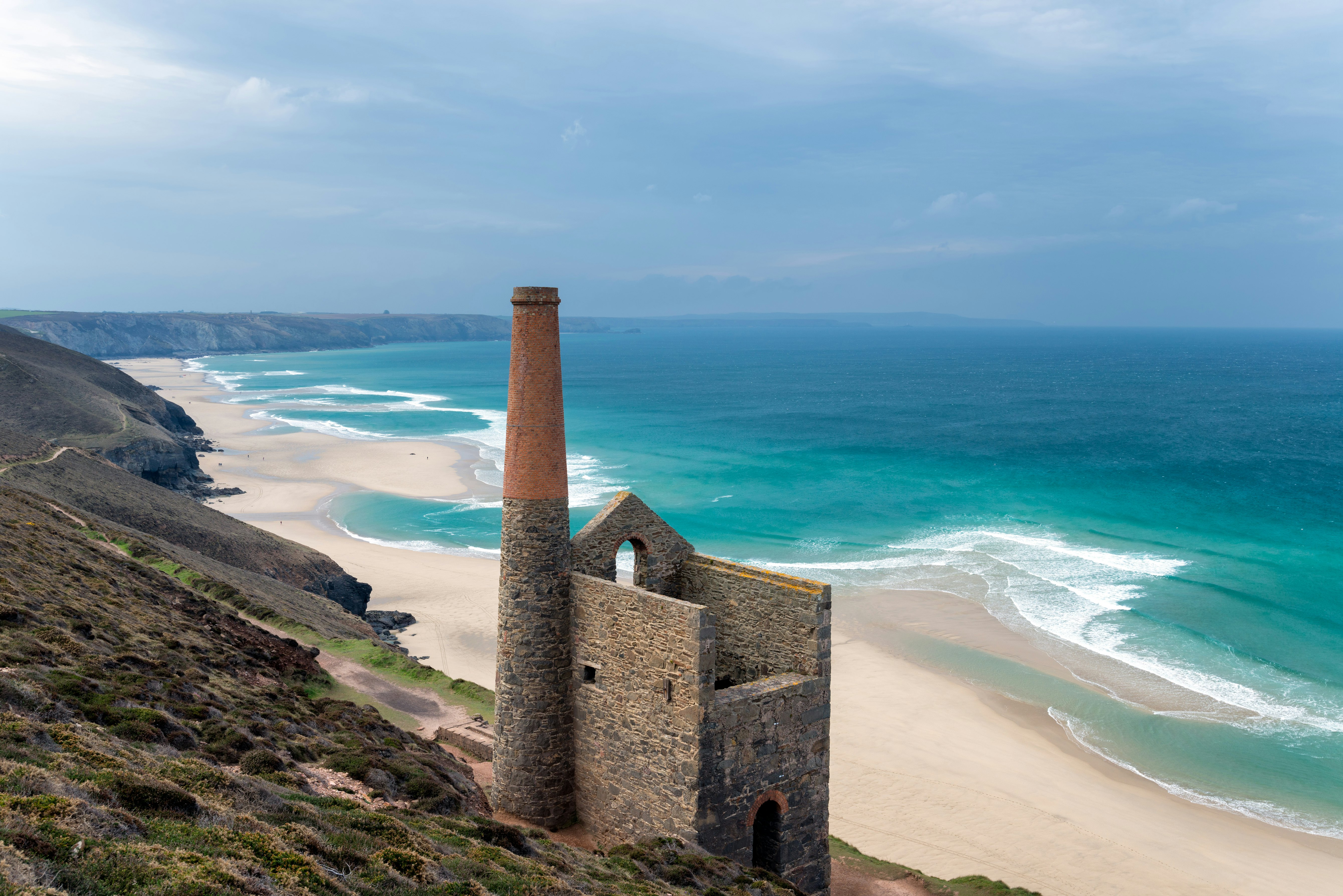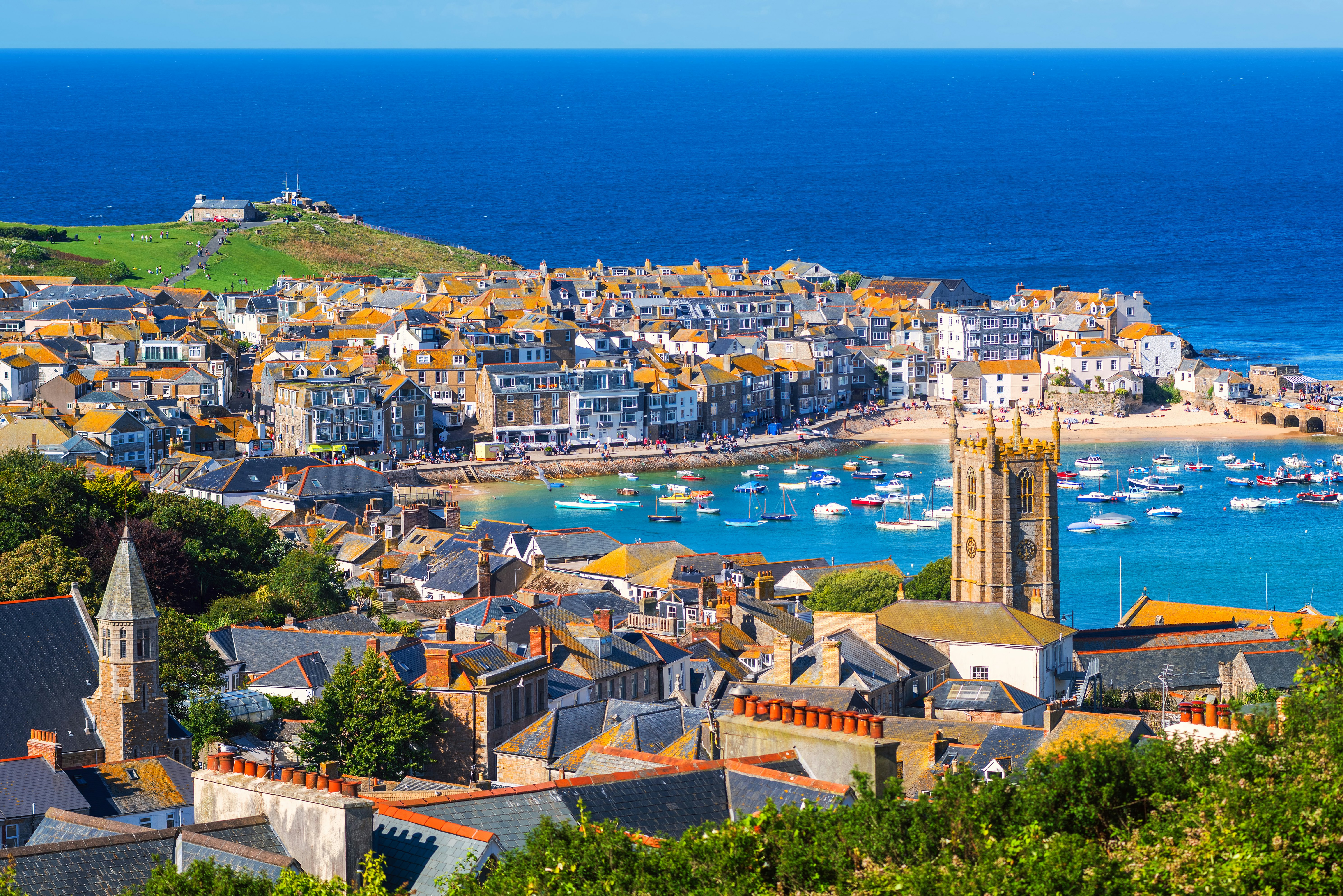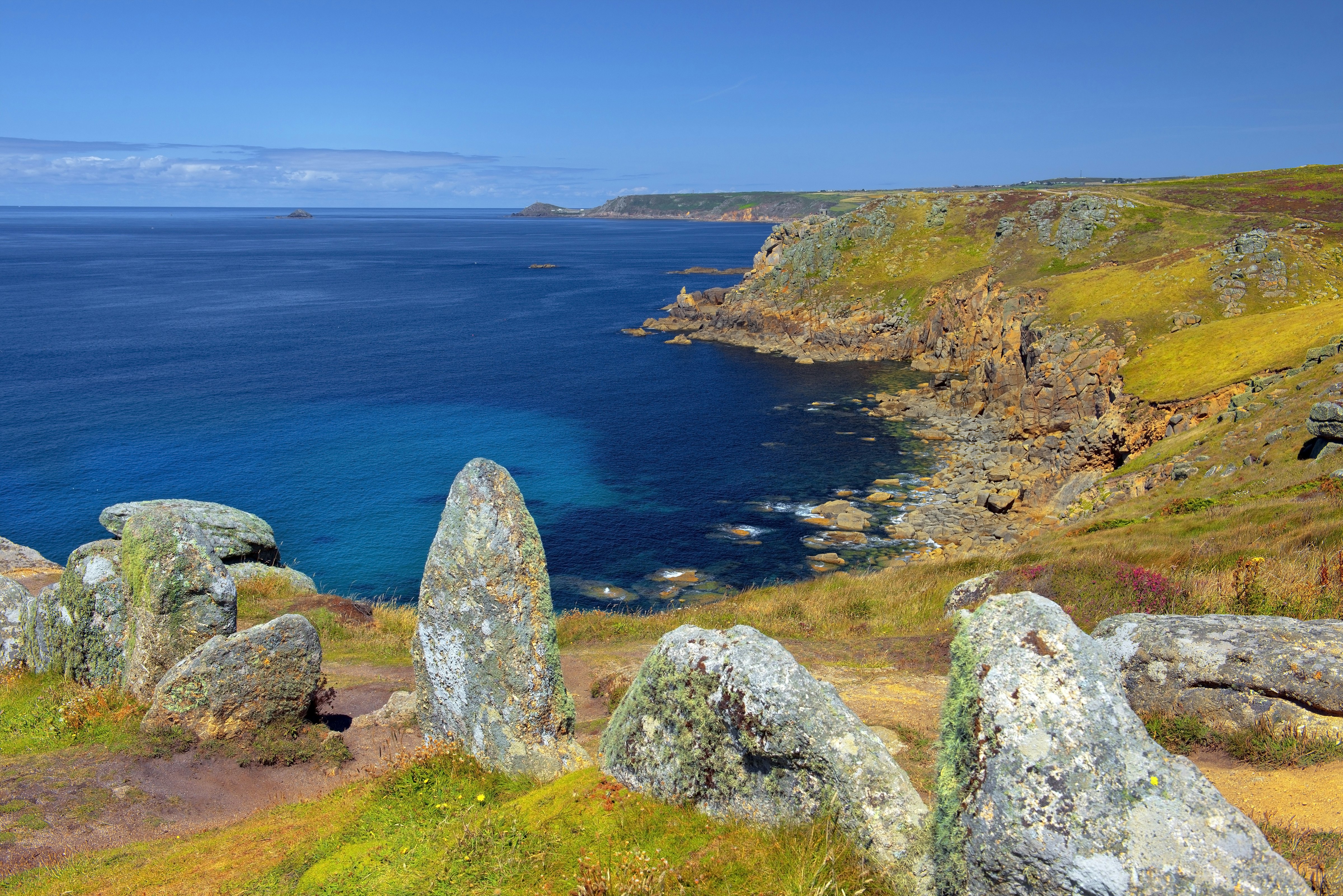
A guide to England’s South West Coast Path



A waymarker on the South West Coastal Path route on the Jurassic Coast. William Barton/Shutterstock
The 630-mile (1013km) South West Coast Path is an iconic long-distance walking trail that encircles the entire southwestern corner of England.
The path was made even more famous internationally thanks to the best-selling memoir The Salt Path by Raynor Winn, published in 2018 and made into a film starring Gillian Anderson in 2024. While later revelations shed doubt on many facts in Winn’s memoir, the episode certainly certainly shined a spotlight on this magical corner of southwest England.
If reading The Salt Path (or just reading about the book) has piqued your interest, now’s the time to set out exploring England’s dramatic coast, which is dotted with charming villages, beautiful beaches and secret coves. Whether you decide to tackle the full route over the course of weeks, or simply walk a mile or two while traveling in the region, here’s what you need to know about the South West Coast Path before you go.

Walking the path
The coast-hugging trail runs westward along the edge of Exmoor and north Devon into Cornwall, looping around the mainland’s westernmost (Land's End) and southernmost (Lizard Point) extremities. It then heads eastward through south Cornwall and south Devon to end at Poole Harbor in Dorset.
Tackling the full South West Coast Path route takes around eight weeks (broken into 52 day-long sections); the standard route is counterclockwise from Minehead to Poole.
Yet the South West Coast Path also provides the backbone for many shorter walks, from full-day hikes to gentle mile-long strolls, including several accessible trails. Countryside Mobility is a nonprofit scheme in the southwest that rents “trampers” (off-road mobility scooters) at an ever-growing number of locations, enabling travelers with mobility challenges to see more of wildlife and nature on various trails.
Those walking the whole path will happily find it very well signposted (look for the acorn symbol) and easy to follow. And three commemorative markers at Minehead (the start), Porthallow (the midpoint) and South Haven Point (the end) provide great opportunities for photos as well as moments of celebration.

Now over 50 years old, the South West Coast Path was created in stages during the 1970s, though many of the trails are far older than that. Until 1913, this same route was patrolled by coast guards and excise officers on the lookout for smugglers.
This is what gives the South West Coast Path such glorious views: these paths hugged the coast as closely as possible to gain the best vantage point into every cove and bay where illegal contraband might come ashore.
Other industries have also left a legacy on the South West Coast Path. There are historic quarries like the ones at Beer and Tintagel, and dozens of mining stacks and engine houses peppering the Cornwall and West Devon Mining Landscape World Heritage Site. Defense structures also fringe the coastline, from Iron Age hill forts to Tudor castles and scores of WWII remnants, such as the Dart Estuary’s Brownstone Battery.
Where does the South West Coast Path begin?
The full 630-mile (1013km) route is currently England’s longest footpath – although it will soon be only one fifth the length of the nearly completed, 2700-mile (4345km) King Charles III England Coast Path.
Between them, the regions of Devon and Cornwall contain the lion’s share of the South West Coast Path, though the actual beginning point is at Minehead in Somerset. A seafront monument – a sculpture of two giant hands holding a map – marks the starting point. This initial region on Exmoor’s coast is one of the most challenging of the entire route: the first section, from Minehead to Porlock Weir, sees you summiting Selworthy Beacon (308m/1010ft) for views of Wales across the Bristol Channel.
When is the best time to walk the South West Coast Path?
Most walkers choose to do the path in spring to late summer. Early autumn is less busy, and cooler weather can be more pleasant for tackling the steeper climbs.
However, very wet weather can cause landslides and sections of the path may be closed or re-routed for safety. Check the latest advice online before setting out, and be prepared for plans to change while you’re on your hike.
What do I need to pack for the South West Coast Path?
If you’re doing the hike as a long-distance through-walk, you'll need to pack or purchase all your hiking gear. It is also possible to rent some hiking gear in England with outfits like Outdoor Hire.
Sunscreen is a must-bring item for this region of England, as the path offers very little shade. And even in summer, the weather in southwest England can be unpredictable. Dress in lightweight layers that can be easily adjusted as conditions change throughout the day.
Hiking shoes are obviously important if you plan on hitting the coast paths. (They also come in handy for cobbled streets in historic areas.) And as Cornwall is sometimes called the “wettest county in England” – there are more rainy days here than average – pack your wet weather gear, too.

How do I get around?
If you’re not hiking the whole path, you may want to do tackle different, unconnected segments. Driving offers the most freedom for getting around and the ability to reach remote areas not served by bus. However, decent public transport options do exist, and using them helps ease the southwest’s seasonal congestion. Most towns and villages are served by fairly decent bus networks, although these can be slow and infrequent so careful planning is needed.
If you are going to rent a car, opting for a smaller car may help with parking in busy beach towns and navigating narrow country lanes or small villages. In rural areas, roads are often winding and single-lane; you’ll need to be ready to back up should you meet oncoming vehicles.
Be aware that if you’re traveling by train, travel costs vary wildly. Traveling off-peak can dramatically reduce costs, and advance tickets are cheaper (often by around 50%), so book as early as possible. (Tickets can usually be booked up to 12 weeks in advance.) If you plan on traveling by train frequently in England, purchasing an annual railcard from National Rail will help reduce costs. An overnight train runs from London to Cornwall; it’s one of just two in the UK. The Night Riviera Sleeper departs London Paddington at 11:45pm, arriving in Penzance just before 8am.

What accommodation options are there along the South West Coast Path?
Wild camping is not allowed on the South West Coast Path – but, for a small fee per night, there are plenty of places to camp on private property near the route. Campsites range from the ultra-basic (think field with portable toilets) to holiday parks with swimming pools. The trend for glamping has swept through the region; many sites now offer bell tents with wood burners, wooden shepherds’ huts and retro caravans. There are also YHA hostels and several independent hostels across Devon and Cornwall, with dorm beds starting from around £25 (US$34).
You can also prebook cozy country pubs, which usually offer hearty British meals, local ales and comfy places to spend the night – right in the heart of a community. The range is vast, from stylishly renovated spaces to poky rooms bordering on seedy. Prices vary massively too, from around £70 (US$94) for double to £160 (US$216) and above.
If money isn’t an issue, you can also book a more luxurious experience with historic countryside manors turned luxury hotels; expect to pay upward of £200 (US$270) a night. Many smaller boutique hotels and independent B&Bs are similarly luxurious – although plenty of midrange and less pricey options can be found.
Top tips for walking the South West Coast Path
Look out for the acorn waymarking symbol
For detailed planning and practicalities visit the trail’s official website, where you can find route guides, updates and planning information.
It’s possible to complete the full South West Coast Path in 30 days, although the average time is six to eight weeks.
Most guides break the trail into 52 day-long sections, which can also be done as standalone walks.
Stay away from the bases of cliffs and the edges of clifftops, and avoid climbing or walking over landslide debris.
The best 3-day section of the South West Coast Path
In August 2025, Britain's walking charity The Ramblers announced the winner of its annual competition for Britain’s Favorite (or Favourite?) Path. A windswept section of the South West Coast Path, between Westward Ho! (Devon) and Bude (Cornwall) on the Hartland Peninsula, took the prize out of nearly 1000 nominations from across the country. (Thursley Common boardwalk in Surrey won in 2024.)
This section of the South West Coast Walk is easily split into three sections of between 10 and 15 miles (16 to 24km) each: Westward Ho! to Clovelly; Clovelly to Hartland Quay; Hartland Quay to Bude. You can do the same in reverse.

The best beach on the South West Coast Path
North along the coastline from Lizard Point, the National Trust–owned inlet of Kynance Cove is a showstopper, studded with craggy offshore islands rising out of searingly blue seas that seem almost tropical in color.
The cliffs around the cove are rich in serpentine, a red-green rock popular with Victorian trinket makers. They’re also a great place for spotting choughs: look out for their distinctive red bills and feet. When the sea isn’t too rough, the cove offers an exhilarating swim; since it gets busy in summer, plan on arriving before 10am.
The beach cafe serves pasties, ice creams and a cracking crab sandwich. You can park on the cliffs above the cove and walk down, or hike the 2.5 miles (4km) from Lizard Point, following a particularly lovely stretch of the South West Coast Path. Although not a long walk, it involves a few steep climbs – but you’re rewarded with spectacular views of the peninsula, especially in spring, when the cliffs are carpeted with wildflowers.

The best day walks on the South West Coast Path
Devon
Valley of the Rocks: A popular section on Exmoor’s coast, littered with striking rock formations steeped in local legends and home to a friendly herd of feral goats.
Start Point: Coastal heathland, a historic lighthouse and a secluded sandy cove on one of the coast’s most exposed peninsulas.
Jurassic Coast: Strike out from Exmouth for red sandstone cliffs, rock stacks and tidal mudflats rich in birdlife.
Mouthmill Beach: Walk from Devon’s postcard-perfect village of Clovelly through ancient woodland to reach a dramatic, triangular rock archway.
Bigbury: Sandy beaches, a tranquil tidal estuary and views of the iconic Burgh Island.
Cornwall
Lizard Peninsula: Spot seals, seabirds and shipwrecks on a walk around Britain’s most southerly point.
Botallack and the Tin Coast: Disused mine chimneys and engine houses dot the cliffs near Pendeen.
Tintagel: Cliff-edge slate quarries, hidden coves and an evocative ruined castle await.
Land’s End Coast Path: Clifftop trails skirt a rugged, rocky headland – don't miss the classic photo op beside the famous Land's End signpost.
Bedruthan Steps: Explore Bronze Age burial mounds and wildflowers around Porth Mear before reaching the iconic rock stacks, named after the giant Bedruthan.
This article was adapted from Lonely Planet’s Devon and Cornwall guidebook, published in June 2025.















